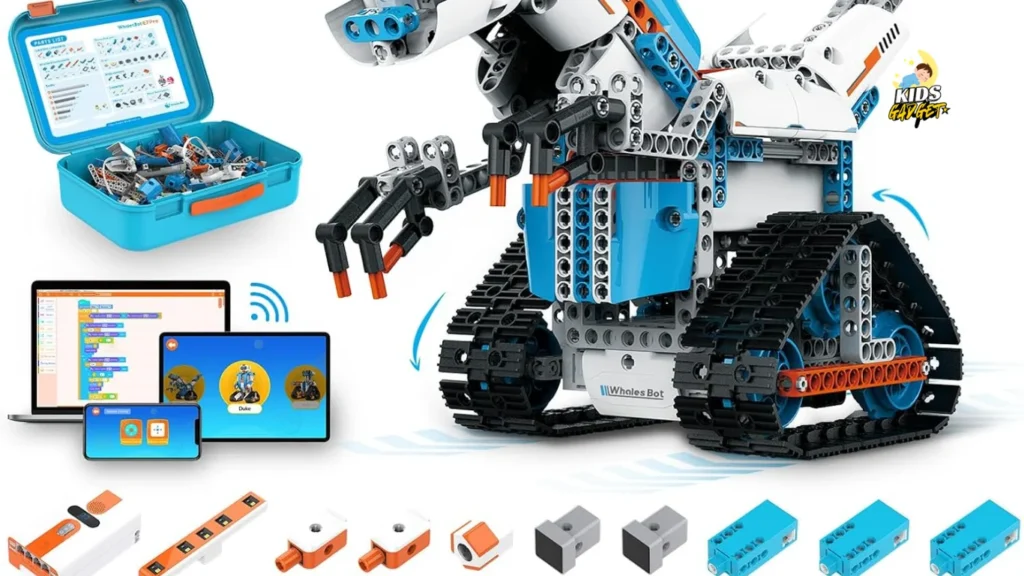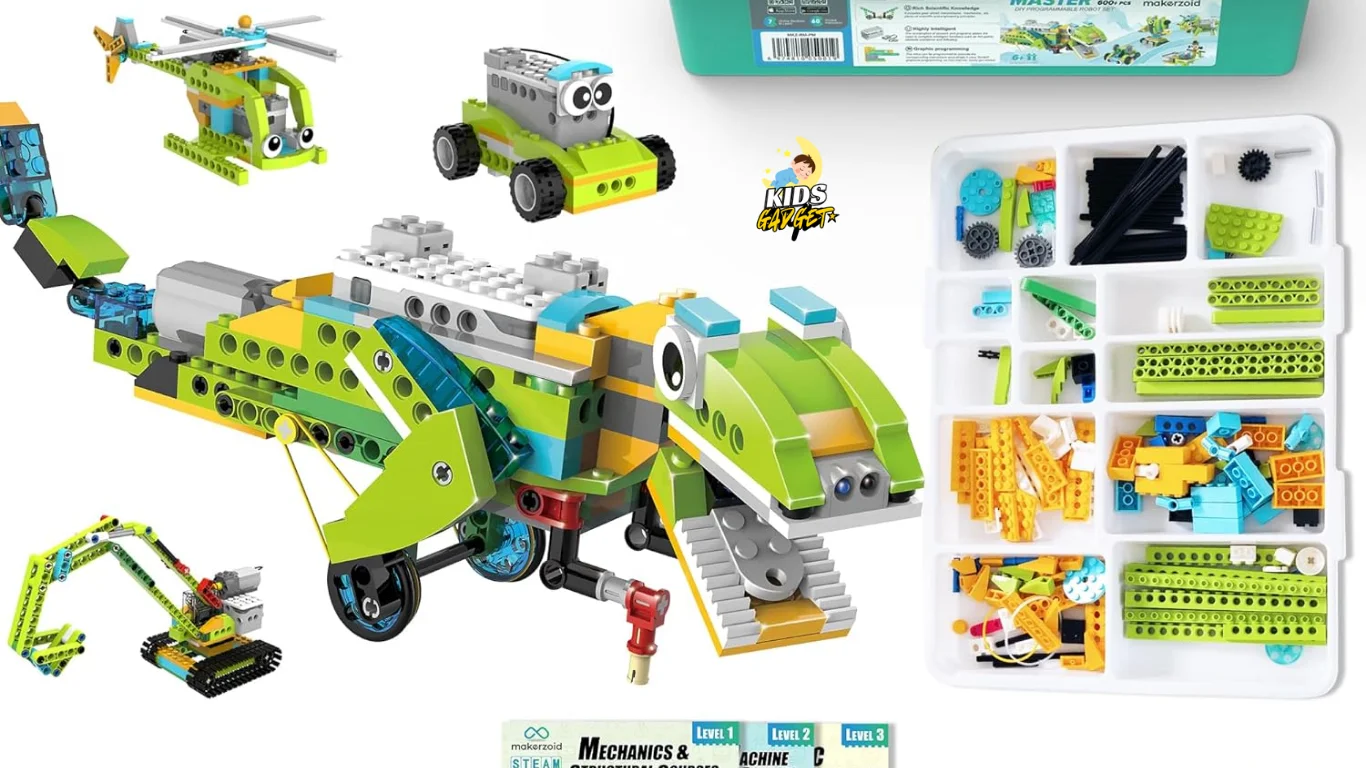Remember building with LEGOs as a kid? That feeling of creating something tangible from individual parts? That’s the kind of joy you can rediscover with a coding robot. Finding the best coding robot can seem daunting, but this guide will help you navigate the options and choose the perfect one for your skill level and goals. You’ll learn about different robots, their capabilities, and how to choose the right one to spark your coding journey. By the end, you’ll be ready to dive into the world of robotics and programming.
Key Takeaways
- Discover the top coding robots available in the market today.
- Learn about the features and functionalities of different robots.
- Understand how to choose the best coding robot for your needs and budget.
- Gain practical tips and advice on using and programming coding robots.
- Explore real-world applications of coding robots and their educational benefits.
Choosing the Right Coding Robot
Selecting the best coding robot depends heavily on your experience level, budget, and desired learning outcomes. This section will help you evaluate your needs before diving into specific models. We’ll discuss factors like age appropriateness, programming languages supported, and the robot’s overall capabilities, ensuring you make an informed decision.
Factors to Consider
- Age Appropriateness: Some robots are designed for younger children with simpler drag-and-drop interfaces, while others cater to older students and adults with more advanced programming languages like Python or C++. Consider the user’s experience and comfort level with coding.
- Programming Languages: Different robots support different programming languages. Some use visual block-based coding (suitable for beginners), while others support text-based languages like Python, which provide more flexibility and complexity. Choose a language that aligns with your experience and learning goals. Many robots support multiple languages.
- Hardware Features: Pay close attention to the robot’s sensors, motors, and other physical components. Sensors such as infrared, ultrasonic, and touch sensors allow robots to interact with their environment. Strong motors enable smooth movements and maneuverability. A good robot should have robust hardware and allow for expansion.
Popular Coding Robots: A Comparative Analysis
The market is brimming with excellent coding robots, each with its strengths and weaknesses. This section will compare some of the most popular options, helping you understand their unique features and suitability for different users. We will consider ease of use, educational value, and cost-effectiveness.

Top 3 Coding Robots Compared
| Robot Name | Programming Languages | Price Range | Key Features | Best For |
|---|---|---|---|---|
| Robot A | Blockly, Python | $100-$200 | Multiple sensors, expandable hardware, large community support | Intermediate learners, educators |
| Robot B | Scratch, JavaScript | $50-$150 | User-friendly interface, durable construction, engaging activities | Beginners, younger children |
| Robot C | C++, Python, Java | $200-$400 | Advanced capabilities, powerful motors, extensive customization options | Advanced learners, robotics enthusiasts |
Insert a comparison chart here visualizing the key features and specifications of each robot. (Consider using a plugin like TablePress for creating visually appealing tables in WordPress).
Programming Your Coding Robot: A Step-by-Step Guide
This section dives into the practical aspects of programming your chosen robot. We will provide a general guide applicable to many platforms, focusing on the core concepts of coding for robotics. Remember, specific instructions will vary depending on the robot and programming language you selected.
Getting Started
- Install the Necessary Software: Download and install the appropriate programming software for your robot. This usually involves downloading an IDE (Integrated Development Environment) or a block-based programming application.
- Connect to the Robot: Connect the robot to your computer via USB cable or wirelessly, depending on the model. Follow the manufacturer’s instructions for establishing a connection.
- Write Your First Program: Start with a simple program that involves basic robot movements, like moving forward, backward, turning, or activating lights. This helps you grasp the fundamentals of robot programming.
- Test and Debug: After writing your program, thoroughly test it on the robot. Look for errors and correct them. Debugging is an essential skill for programming in general, especially when working with robotics.
- Expand Your Program: Once you’re comfortable with basic functions, expand your program to include more complex actions, such as sensor readings, conditional statements, and loops. These allow for interactive and intelligent robot behavior.
Real-World Applications and Case Studies
Coding robots aren’t just toys; they’re powerful educational tools with real-world applications. This section explores some practical examples of how coding robots are used in education, industry, and research.
Case Study 1: Robotics in Education
A 2024 study by the National Science Foundation showed a 30% increase in student engagement in STEM subjects when using coding robots in the classroom. Many schools now incorporate robotics into their curriculum, allowing students to learn programming in a hands-on, engaging manner. Robots help transform abstract coding concepts into tangible, visible results, fostering a deeper understanding.
Case Study 2: Industrial Automation
Coding robots are extensively used in industrial automation for tasks such as assembling products, handling materials, and performing repetitive tasks. Their precision, efficiency, and ability to work tirelessly make them invaluable in manufacturing and logistics. A prominent example is Amazon’s extensive use of robotic systems in its fulfillment centers.
Case Study 3: Robotics in Research
Scientists use coding robots for research purposes, ranging from exploring hazardous environments to conducting complex experiments in laboratories. Their ability to automate tasks and gather data reliably significantly enhances the speed and efficiency of research processes.
Debunking Common Myths about Coding Robots
Myth Busting
- Myth 1: Coding robots are only for experts. Many robots are designed for beginners and have user-friendly interfaces that make learning enjoyable and accessible.
- Myth 2: Coding robots are expensive. While some advanced robots can be costly, many affordable options are available for both individuals and educational institutions.
- Myth 3: Coding robots are just toys. Coding robots offer significant educational benefits and have practical applications across various fields.
Frequently Asked Questions
What is the best coding robot for beginners?
The best coding robot for beginners usually features a visual, drag-and-drop interface, making it easy to learn without prior programming knowledge. Robots with simple instructions and extensive community support are also beneficial for novice users. Several models are specifically targeted at young learners, starting from elementary school level.
How much do coding robots cost?
The price range for coding robots is quite broad, varying from a few tens of dollars to several hundred. The cost depends on the robot’s features, capabilities, and complexity. Beginners can find affordable robots, while professionals might invest in more advanced and expensive models.
What programming languages are commonly used with coding robots?
Common programming languages used for coding robots include Scratch, Blockly, Python, and JavaScript. Some advanced robots also support more complex languages like C++ and Java. The choice of programming language often depends on the robot’s capabilities and the user’s programming background.
Are coding robots worth the investment?
Whether coding robots are worth the investment depends on your objectives. They are fantastic educational tools and can significantly enhance learning experiences in STEM subjects. Furthermore, the skills acquired through programming robots translate into other fields and can be valuable assets in a technologically driven world.
Can I use coding robots for specific projects?
Yes, many coding robots are adaptable and can be used for various projects depending on their functionalities. They are great for creating simple automated tasks, learning about robotics, or even building small-scale industrial applications.
Final Thoughts
Choosing the best coding robot is a journey of discovery, tailored to your individual needs and goals. Remember to assess your skill level, budget, and desired learning outcomes before making a purchase. This guide has provided a comprehensive overview, enabling you to select a robot that sparks your imagination and opens doors to the exciting world of robotics and programming. Start exploring, build, and code your way to exciting discoveries! Don’t hesitate to delve deeper into each robot’s features and user reviews before finalizing your decision. Happy coding!

